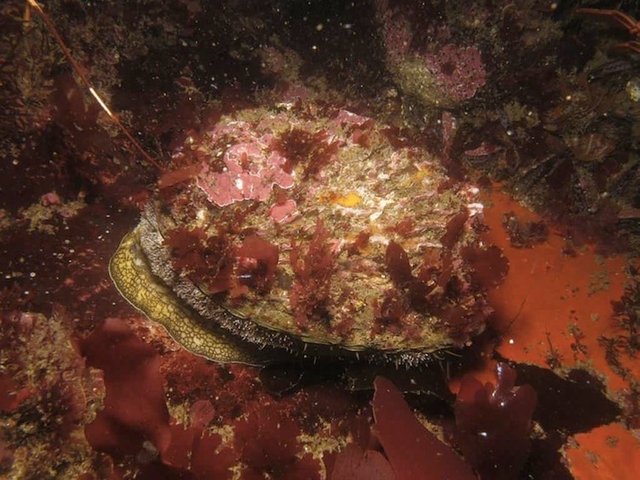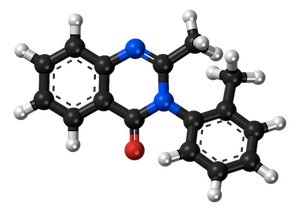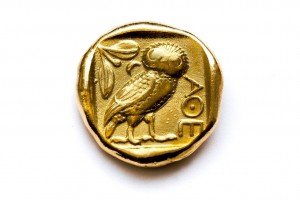How many Quaaludes does one abalone sea snail cost?
Junior mafias in Cape Town, South Africa, poach haliotis midae, an endangered species of sea snail commonly referred to as abalone.

It is traded for N-Acetylanthranilic acid, a precursor for methaqualone, smuggled into Cape Town harbour by the Chinese mafia.
Methaqualone, sold under the brand name Quaalude in the US and Mandrax in the UK and South Africa, is a sedative and hypnotic medication.
Its use peaked in the early 1970s as a hypnotic, for the treatment of insomnia,
and as a sedative and muscle relaxant. --Wikipedia

The acid is used to make Quaaludes, called Mandrax in South Africa, which is crushed and smoked in the neck of a broken bottle.
The Chinese value South Africa's abalone [considered a delicacy and status symbol in China] as much as South Africans value Chinese N-Acetylanthranilic acid. With each buyer possessing a commodity that's inexpensive in their respective countries, a mutually beneficial barter system emerges. --Hamilton's Pharmacopeia
How many Quaaludes does one abalone sea snail cost? Your guess is as good as mine but we can know with certainty that the Chinese value the Abalone more than the acid and the South Africans value the acid more than the Abalone, so there is a disagreement on the value of the commodities involved in the trade. Through barter both parties agree on a price.
All commodity markets are created by people who disagree on value and agree on price! --Bill Williams, Trading Chaos
This is not a new phenomenon
In economics, typically, the term market means the aggregate of possible buyers and sellers of a certain good or service and the transactions between them. -- Wikipedia
The transactions between the Chinese and South African mafias trading Abalone create a modern (illegal) commodity market. This is not a new phenomenon. Commodity markets have existed since at least 11,000 years ago when Anatolian obsidian was traded, a valuable commodity for making tools at the time.
Before the European colonization (or genocide) began, there were complex trade networks among Native American tribes in North America.
...the Hohokam tribe, centered in present day Arizona, traded seashells,
which they had acquired from the Mojave tribe, for buffalo hides from various southern Plains tribes. -- WyoHistory
Like everything in nature, markets evolve. Since the 17th century traders at major exchange centres would communicate with a method called open outcry, which was basically the use of hand signals and shouting. Modern exchanges have a pit, circular rooms sloping towards the centre so that traders can see each other. Pit or floor trading can be seen demonstrated at the Chicago Board of Trade in this clip from 1993. The brightly coloured jackets indicate which firm a trader works for.
This era of trading has been slowly dying since the creation of the internet, allowing cheaper communication and faster transactions, enabling buyers and sellers around the world to connect instantly.
Where supply and demand meet
Although commodity markets today are vastly more complex, the process of price discovery is essentially no different from when the Native Americans traded in 500 BCE or in the South African Abalone market.
Markets establish the going rates for goods and services, which sellers determine by creating supply and buyers determine by creating demand.--Investopedia
A company may make their products different from competitors or advertise to gain market share which can distort the forces of supply and demand. The higher the degree of competition, the better the market functions.
Every market in the world is designed to ration or distribute a limited amount of some commodity (whether agricultural, financial, or whatever) to those who want it most. The market does this by finding and defining the exact price where, at that moment, there is an absolute balance between the power of those who want to buy and those who want to sell." --Bill Williams, Trading Chaos
Assuming there isn't a monopoly, the price of any commodity is determined by the sum behaviour of all market participants. This is especially the case in fiat currency markets.
Due to its vast volume and large number of participants, no individual or single company has complete control over which way the market will sway. --CMSForex
Consumers and travellers, businesses, investors and speculators, commercial and investment banks, governments and central banks together with their combined participation create the process of price discovery in the forex market.
Think of it as a giant auction with hundreds of buyers and sellers. The price can go up and down in a never ending bidding war. Where supply and demand meet at any given moment is defined by a commodity's price.
Money: the root of all evil?

Money is an emergent property of commodity markets, evolving out of necessity. Although the origin of coins is a mystery, the Greeks minted some of the first in the Western world. Aristotle explains the need for money perfectly:
The various necessaries of life are not easily carried about! --classicalwisdom
I've never tried it but I assume it's easier to carry coins in my pocket than chickens. The banknote is an evolution of coins, making it unnecessary to move heavy precious metal from one country to another. At the end of the 20th century the internet was the next great innovation. Physical money in any form, is no longer necessary today.
Banks are useful for providing security, value transfer, and loans to, "grease the wheels of commerce and help it grow as well." Now with Blockchain technology banks are no longer needed. This latest monetary upgrade has introduced new kinds of markets never possible before. Who knows what could happen if Blockchain technology were widely accepted and implemented?
No one can know the future but markets will most likely continue to exist and evolve. They may even be much older than 11,000 years, spontaneously emerging at the dawn of our species, in time becoming more complex with vast numbers of participants possessing diverse motivations and smarter technology. I often wonder what the consequences would be of widespread peer-to-peer economies bypassing big bank dependance, empowering every human to freely trade with each other. I imagine it would be a change for the better.
Follow @skypal for weekly posts about markets and life.